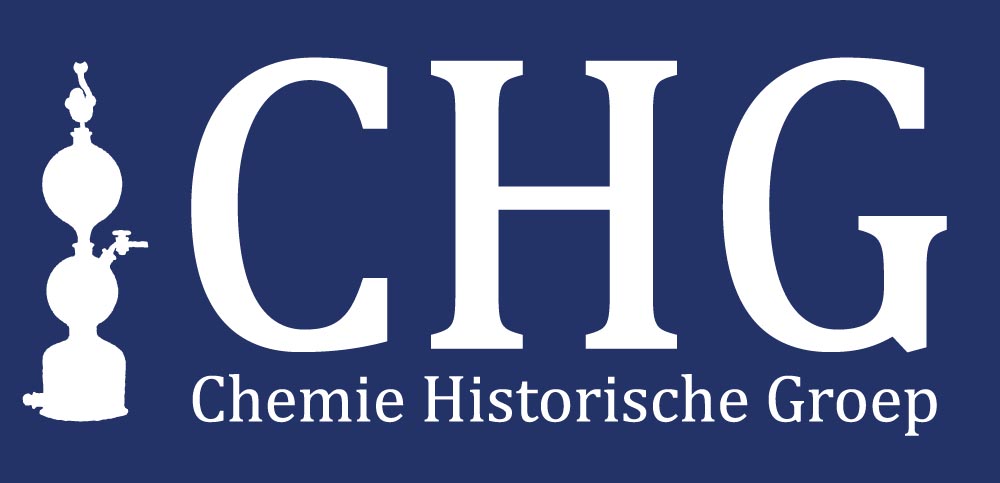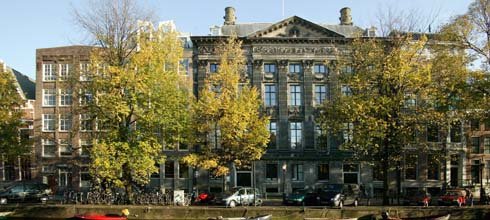Mini-symposium on the chemical relations between Japan & the West in the 19th Century
February 27, 2013 – Trippenhuis, Amsterdam
Mini-symposium on the chemical relations between Japan & the West in the 19th Century
February 27, 2013 – Trippenhuis, Amsterdam
The Chemie Historische Groep [“Chemistry History Group”; CHG] of the Koninklijke Nederlandse Chemische Vereniging [“Royal Netherlands Chemical Society”; KNCV] organises on Wednesday afternoon, February 27, starting at 15:00 h, the Mini-symposium Bringing Chemistry to Japan: chemical relations between Japan & the West in the 19th Century. The meeting will take place in the Trippenhuis, the seat of the Royal Netherlands Academy of Sciences [KNAW]. You are herewith kindly invited to attend. Details on how to gain admission can be found below.
In the second half of the 19th century a cultural revolution took place in Japan that transformed it from an isolated feudal nation into a full-fledged player in the modern world – an idea of this momentous change can be gleaned from the magnificent Autobiography [in Dutch: De poorten gaan open] of Yukichi Fukuzawa (1835-1901), one of the main architects of the revolution (who knew Dutch, by the way). – Here, we concentrate on how modern chemistry was brought to Japan, and we start about the time in which David Mitchell’s The Thousand Autumns of Jacob de Zoet is set, about 1800 [the action in this excellent novel takes place around Dejima, the Dutch trading-post in Nagasaki, 1641-1859].
The first speaker, Professor Harm Beukers, will take us from 1800 to 1875, discussing the chemical relations between the Netherlands and Japan from the early translation efforts of Udagawa Yoan (1798-1846) and culminating in the career of Koenraad Wolter Gratama (1831-1888), military physician & medical teacher in Japan, scion of an old Frisian patrician family. Gratama started the first Japanese chemistry school, in Osaka – in gratitude for which in 2000 a bust of him has been placed near the site of this school.
The second speaker, Dr Yoshiyuki Kikuchi, will focus on a slightly later episode, viz. the design and construction of a general chemical laboratory for Tokyo University, 1885-1888 [based on the book he is writing for Palgrave Macmillan USA]. The important question here being how knowledge could be envisaged to be effectively transferred from Western teachers to Japanese students.
Programme
15:00 – 15:25 Reception with coffee/tea
15:25 – 15:30 Opening by the chairman
15:30 – 16:15 Harm Beukers (Scaliger professor, U Leiden), Red-Haired chemistry: Dutch-Japanese relations in the field of chemistry, 1800-1875
16:15 – 17:00 Yoshiyuki Kikuchi (International Institute for Asian Studies), Anglo-American and German connections in Japanese Chemistry: The Lab as Contact Zone
17:00 – 17:30 Drinks
Date: Wednesday, February 27, 2013, 15:00-17:30 h
Venue: De Oude Vergaderzaal,Het Trippenhuis (KNAW), Kloveniersburgwal 29, 1011 JV Amsterdam [within walking distance of Amsterdam Central Station]. For more details see www.knaw.nl.
Admission: € 10 for CHG-members, € 15 otherwise
Registration: Please register before February 25, by transferring the amount due into ING account 754306534 in the name of E.R.J. Wils, Vlaardingen, mentioning “Japan, Feb. 27” [IBAN/BIC: NL98INGB0754306534, INGBNL2A].
Please also notify Rob van Veen, veen1948@xs4all.nl, mentioning your name & affiliation – and please be aware that the capacity of the Oude Vergaderzaal only allows 45 attendees: places will be allotted in order of reception of the admission charge.
Abstract
Anglo-American and German Connections in Japanese Chemistry: The Lab as Contact Zone
Yoshiyuki Kikuchi (International Institute for Asian Studies)
The United States, Great Britain and Germany emerged as major “partners” for Japanese chemistry around the Meiji Restoration in 1868 and left their own marks on higher education and research activities in chemistry there. Did American, British and German connections in Japanese chemistry stand in isolation, or were they intertwined with each other? This presentation addresses this question by looking at an important episode in the history of chemistry in modern Japan, the designing and construction of a general chemical laboratory for Tokyo University between 1885 and 1888. It focuses on how designers conceived a lab as a “contact zone,” i.e. “a space in which peoples geographically and historically separated come into contact with each other” (Mary Louise Pratt, 1992), in this case foreign and foreign-trained teachers and Japanese students.
Use this link for the presentation of the slides.
Prof. dr. Harm Beukers publiceerde in 1989 twee artikelen getiteld 'Introductie van de Moderne Chemie in Japan' in het tijdschrift Forum diagnosticum (nr. 2/89, p. 31-34 en nr. 3-4/89, p. 48-51). Beide artikelen vormden de basis van zijn voordracht en werden door hem ter beschikking gesteld voor publicatie op deze website. De artikelen werden overgezet in een pdf-bestand (5.1 MB).Klik hier voor de link.
Uit het eerste artikel zijn in onderstaande figuur de namen weergegeven van de elementen 'CHON'.


